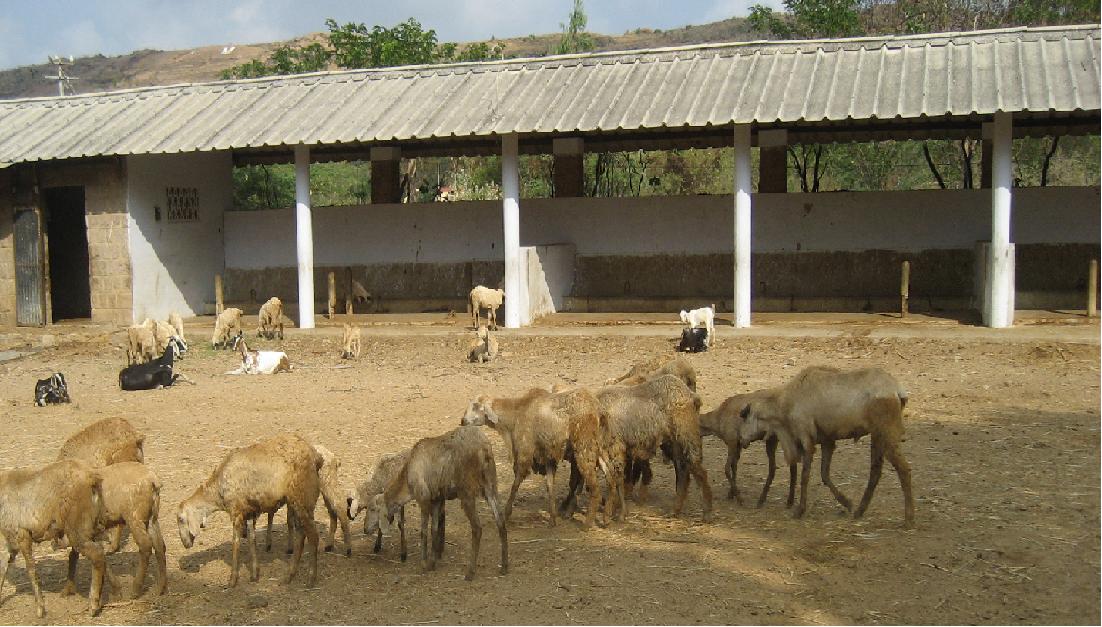HOUSING AND SHELTER MANAGEMENT
Normally sheep do not require elaborate housing facilities but minimum provisions will definitely increase productivity, especially protection against inclement weather conditions (sun, rain and winds) and predation. Shed could be built along the wall of the house. Further protection could be provided with gunny bags or temporary of removable protections made of thatching material and bamboos. The roof of the shed should be made of the asbestos sheet supported by tubular or angular steel, but wooden rafters and thatching material could also be used. Exotics should be provided 0.9-1.1 m2 and native and crossbred sheep 0.8-0.9m2 space per head. Shed measuring 18 m x 6 m can accommodate about 120 sheep. A chain link fencing or thorny bush enclosure of 12 m x 6 m can be provided for night paddocking of sheep on each side of the shed.

Classing and Culling
Classing and culling of sheep are very important for the development of a good flock. It helps to remove undesirable animals and breeding from those which are most approximating the ideal sheep. About 10-20 per cent culling should be practiced annually to develop a good flock. The flock size should be maintained by replacing culled ewes by ewe lambs born in the flock.
Maintenance of Records
It is very essential to maintain the necessary records at an organized (experimental or commercial) sheep farm to know about the inputs and outputs.This helps in working out the economy of sheep production per unit of area and per animal. The following records should be maintained: livestock strength, breeding, lambing, shearing and wool production, mortality, purchase of animal feeds, medicines and equipments, and sale of animals and wool.
Identification
The shepherds commonly practice notching or punching holes in the ears for identification of lambs. Tattooing is also satisfactory but is more expensive. Metal or plastic ear-tags with stamped letters and numbers are most suitable although they are relatively expensive and heavy for the ears of the smaller native sheep. These ears tags are applied with the help of a clincher.
Castration
Surplus males are castrated to check indiscriminate mating but market demand most often favours the intact male. Castration is usually done by using knife, burdizzo castrator or elastrator. The elastrator method is the best as it is painless and bloodless. It involves placing of a tight rubber band around the root of the scrotum with the testicles below. The scrotum with enclosed testicles atrophy and slough off.
Dipping
To control the ectoparasites the sheep should be dipped a few weeks after shearing when they have grown sufficient new wool to hold the chemical substance. There are standard designs for sheep dips and there are many products effective against ectoparasites. A foot bath may also be provided at the entrance of the farm to prevent the spread of contagious diseases like foot-and-mouth disease and foot rot.
Shearing
Shearing is done mechanically either with clippers, a pair of scissors or by power-operated machines depending upon the size of operations. Most flocks are usually shorn twice a year, i.e. March-April after the winter and September-October after the rains. In some states like Jammu & Kashmir and Rajasthan sheep are shorn thrice a year.
(Source: Dr.Acharya, Handbook of Animal Husbandry) |

